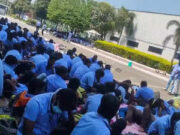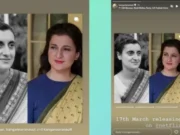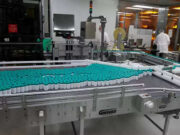
Nearly a decade ago, a seemingly casual dinner in a Chennai hotel turned into a groundbreaking project. K R Balakrishnan, a heart-lung transplant surgeon from Chennai, and Pete Ayre, a bioengineering professor at the University of New South Wales, met for dinner and began discussing artificial heart pumps. What started as a conversation soon led to them borrowing pencils from the waiter to sketch designs on napkins.
From Napkins to Labs
The impromptu drawings quickly transitioned from the dining table to the laboratory. Within five years, prototypes were developed. Two of these prototypes—one for the left side of the heart and a smaller one for the right—are currently undergoing tests in sheep in Australia. If all goes well, the team plans to initiate clinical trials on humans in India and Australia by December 2024. The technology has already been patented, showing promise for a significant breakthrough in cardiac care.
Creating an Affordable Solution
Balakrishnan and Ayre co-founded a company called Cardiobionic to bring their vision to life. The goal was to create a long-term, affordable heart pump to address heart failure. Current heart pumps on the market are expensive, costing around $100,000. The team aimed to produce a device at a quarter of that cost. Additionally, existing pumps are bulky, making them unsuitable for smaller individuals and children.The pumps available today support only the left ventricle, often leaving patients requiring intensive care when the right side of the heart fails. To address this, Balakrishnan and Ayre developed a bi-ventricular assist pump that supports both sides of the heart with a single console and a smaller device.
Overcoming Financial Hurdles
The initial excitement was met with a significant challenge: funding. Balakrishnan reached out to more than 50 businessmen worldwide. Finally, two Indian investors, whose identities remain undisclosed, agreed to fund the project. This financial backing allowed the team to make substantial progress.
Innovating the Pump Design
The new pump is made of titanium and features a non-contact impeller that pulls blood from the ventricle and pushes it into the aorta, ensuring oxygen-rich blood reaches the body. This design allows the pump to float on blood and spin continuously, potentially making it a permanent solution rather than a temporary bridge to a transplant.
Addressing a Critical Need
Heart failure patients often die waiting for an organ transplant due to the numerous hurdles involved, such as organ availability and the logistical challenge of transporting organs within their shelf life. This new pump could significantly reduce such deaths by offering an alternative to transplants. Moreover, the smaller pump designed for the right side of the heart in adults can be used as a left ventricular assist device (LVAD) for children, addressing the lack of pediatric-specific pumps.
Doctors are encouraging the team to make the pump as efficient as the human heart, which can increase output during pregnancy, exercise, or emergencies. This involves integrating pressure sensors to help the pump adjust accordingly. While trials in Australian sheep show promise, the team is seeking product approval in India, the US, and Europe. (With TOI inputs)












































